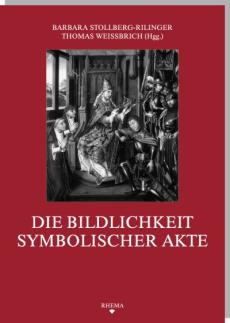The Visual Aspects of Symbolic Acts

In the pre-modern period, symbolic acts always had a very powerful visual presence. Contemporaries considered parades, coronations, processions and consecrations to be ‘spectacula’. Their visually suggestive power has proven itself to be a strategy of orchestration which decisively contributed to the effective communication of political and religious messages. The visual aspect of symbolic acts can be observed on several, closely connected levels: actors’ individual gestures have a visual quality, but this is true above all for the complex series of actions in rituals and ceremonies. They were performed as publicly visible, ‘living’ pictures and understood as such: mutually seeing and being seen was their distinguishing characteristic. At a performative level, material images could be included in these actions, whether as an object of religious veneration, for reasons of political propaganda or as representative aides de memoire. At the level of reception, symbolic acts were a prominent subject of depictions in propaganda, historiography and visual art. Their ephemeral visual aspect could therefore be made permanent at least partially, although admittedly they were shaped according to medial strategies and (re-)orchestrated.
The volume documents an international conference which was held by the Collaborative Research Centre 496, ‘Symbolic Communication and Social Value Systems from the Middle Ages to the French Revolution’ at the University of Münster in October 2007. It also served as a preparation for the exhibition, ‘Spectacles of Power. Rituals in Ancien Regime Europe, 800-1800’ at the Kulturhistorisches Museum, Magdeburg. The articles from various disciplines use selected examples to analyse the connections and inter-medial interactions between images and actions, artefacts, texts and sounds, as regards the so-called ‘Ancien Regime’ in Europe from the early Middle Ages to the French Revolution.
Literature: Stollberg-Rilinger, Barbara, and Thomas Weißbrich (eds.), Die Bildlichkeit symbolischer Akte (Symbolische Kommunikation und gesellschaftliche Wertesysteme – Schriftenreihe des Sonderforschungsbereichs 496, vol. 28), Münster: Rhema 2010 (with contributions from Gerd Althoff, Werner Freitag, Thomas Lentes, and Hans-Ulrich Thamer).

